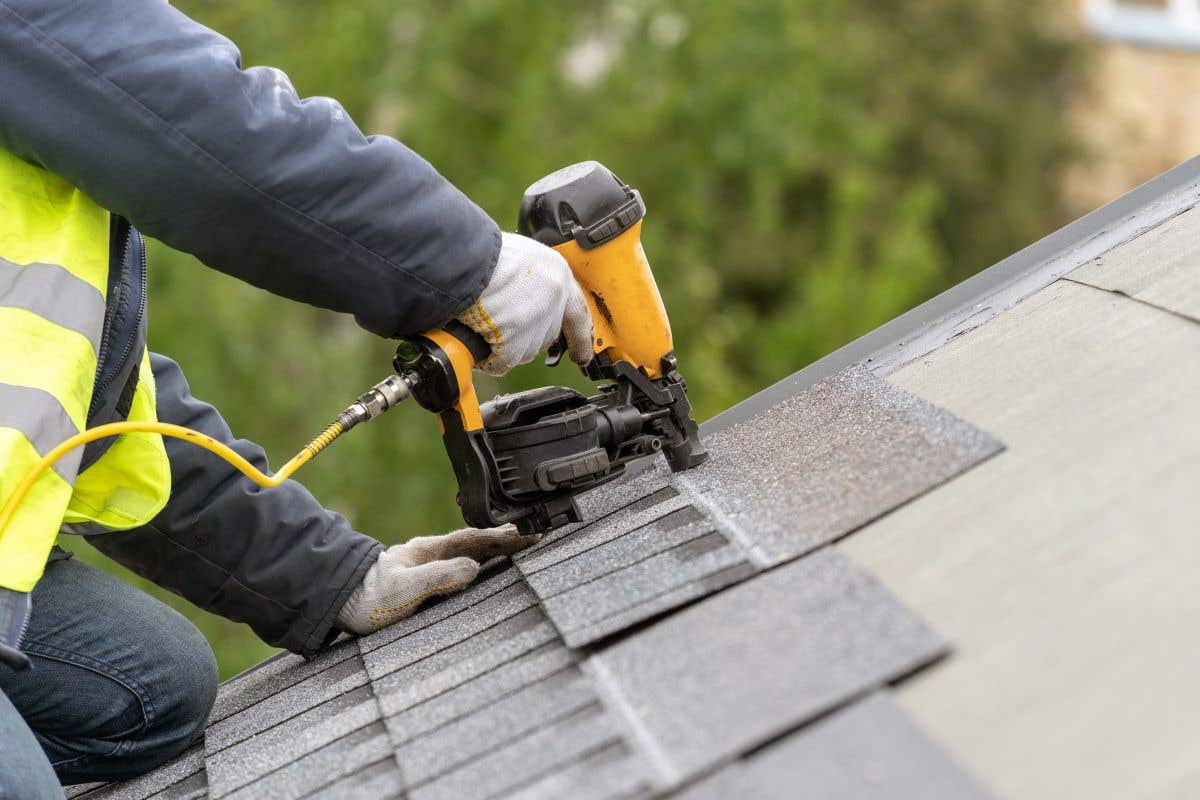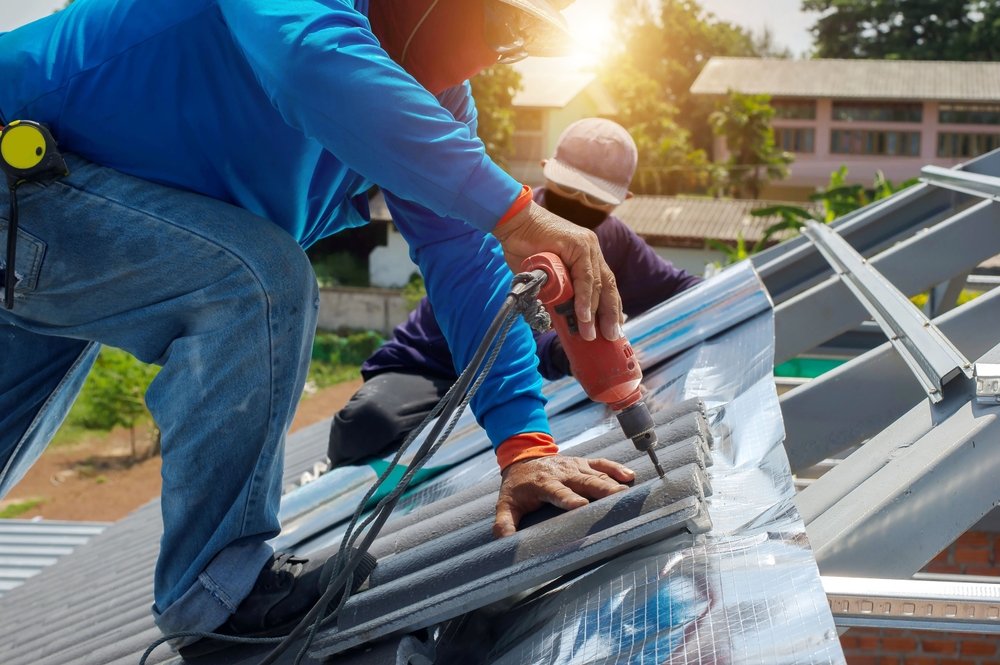Recognizing the Different Kinds Of Roofs: A Comprehensive Overview for Homeowners
In the realm of homeownership, selecting the proper roof covering style is a decision that lugs significant ramifications for both capability and aesthetic appeal. With an array of alternatives-- varying from the standard gable to the modern level-- each kind presents one-of-a-kind benefits and obstacles that should align with the homeowner's environmental considerations and certain demands. Understanding these differences not just help in making an informed selection but likewise influences lasting maintenance and energy effectiveness. As we explore the details of numerous roof kinds, it becomes noticeable that one size does not fit all; the appropriate option may stun you.
Saddleback Roof
Gable roofs, identified by their triangular form, are amongst the most preferred roof covering designs because of their simpleness and effectiveness in losing water and snow. This design features two sloping sides that meet at a ridge, enabling for effective water drainage and lessening the danger of water buildup. The steep pitch commonly related to saddleback roofs enhances their capability to take care of heavy rainfall, making them appropriate for various climates.
Along with their sensible advantages, gable roofings use visual convenience. They can be adapted to various building styles, from traditional to modern-day homes. The design can also suit extra functions such as dormer windows, which improve natural light and air flow in the attic room area.
In addition, saddleback roofs supply adequate room for insulation, adding to energy effectiveness. Property owners can pick from a range of roof covering materials, including asphalt tiles, metal, and ceramic tiles, additionally improving personalization options.
Regardless of their advantages, saddleback roofs may require extra support in locations vulnerable to high winds or heavy snowfall. Overall, the saddleback roof continues to be a favored choice due to its blend of performance, sturdiness, and visual allure.
Apartment Roofs
Level roof coverings are often identified for their minimalist style and practical applications, especially in industrial and industrial setups (oahu roofing). These roof coverings feature a straight or almost straight surface area, which enables simple building and construction and versatile area utilization. While they might do not have the visual allure of angled roofs, level roofing systems supply countless benefits, especially in urban settings where optimizing area is crucial
One of the main advantages of flat roofs is their ease of access. Homeowners can make use of the roof covering space for various purposes, such as roof yards, balconies, or solar panel installations. Additionally, flat roof coverings are generally extra cost-effective to preserve and install contrasted to their sloped equivalents, as they call for fewer materials and labor.
Nevertheless, level roofing systems do present specific difficulties. Correct drainage is vital to protect against water merging, which can cause leakages and structural damage. Thus, picking high-quality waterproofing products and routine evaluations are crucial for guaranteeing longevity. Usual products used for flat roofs consist of built-up roof (BUR), customized asphalt, and single-ply membranes, each offering distinctive benefits. Overall, level roofing systems act as a versatile and practical choice for lots of house owners and organizations alike.
Hip Roof Coverings
Hip roofing systems are identified by their sloped sides that converge at the top, forming a ridge. This design is distinct from saddleback roofs, as all 4 sides of a hip roof incline downwards toward the wall surfaces, offering a more stable structure. The angle of the slopes can vary, permitting flexibility in building aesthetic appeals and performance.
One official statement of the primary benefits of hip roofing systems is their capability to hold up against hefty winds and damaging weather conditions. The sloped surface areas allow far better water drainage, minimizing the threat of leaks and water damages. Furthermore, hip roofs use increased attic area, which can be made use of for storage space or even exchanged habitable areas.
However, building a hip roof can be extra complicated and pricey than easier roof covering types, such as gable roof coverings. The added material and labor associated with producing the inclines and guaranteeing appropriate structural stability can cause higher expenditures. In spite of these downsides, many house owners prefer hip roof coverings for their longevity, visual allure, and capacity for power performance.
Mansard Roofs
Mansard roof coverings, typically identified by their one-of-a-kind four-sided design, feature two slopes on each side, with the reduced incline being steeper than the upper. This building design, originating from France in the 17th century, is not just aesthetically attractive but useful, as it optimizes the usable room in the top floorings of a building. The steep lower incline permits more headroom, making it an ideal choice for loft spaces or attics, which can be converted into living rooms.
Mansard roofings are characterized by their versatility, accommodating numerous architectural designs, from conventional to More about the author modern-day. They can be created with various products, consisting of asphalt shingles, slate, or metal, providing home owners with a variety of choices to fit their budget plans and preferences. Furthermore, the style enables the combination of dormer home windows, improving natural light and air flow in the upper levels.
However, it is necessary to take into consideration the possible downsides. Mansard roofs might call for even more maintenance due to the intricacy of their style, and their steep inclines can be testing for snow and rain drainage. Generally, mansard roof coverings combine beauty with practicality, making them a preferred choice among property owners seeking distinctive architectural features.
Lost Roof Coverings
As property owners progressively look for simpleness and capability in their architectural layouts, lost roofs have actually become a popular selection. Characterized by a solitary sloping plane, a shed roofing presents a minimalist aesthetic that matches numerous home styles, from modern to rustic.
One of the primary advantages of a shed roof is its simple building and construction, which usually converts to lower labor and material costs. This layout allows for effective water drainage, minimizing the danger of leaks and water damages. Additionally, the upright incline provides sufficient space for skylights, improving natural light within the interior.
Lost roof coverings additionally supply flexibility in regards to use. They can be properly incorporated right into enhancements, garages, or exterior structures like sheds and structures. Moreover, this roof style explanation can suit numerous roof materials, including metal, asphalt roof shingles, and even environment-friendly roofing systems, aligning with environment-friendly initiatives.
Nonetheless, it is vital to take into consideration regional climate conditions, as heavy snow tons may demand modifications to the roof covering's angle or framework. Generally, lost roofs present a practical and visually pleasing alternative for home owners wanting to optimize functionality without endangering style.
Final Thought


Gable roofing systems, identified by their triangular form, are amongst the most popular roof designs due to their simpleness and performance in losing water and snow. oahu roofing. The steep pitch commonly associated with gable roof coverings boosts their capacity to manage heavy rainfall, making them ideal for numerous environments
While they might do not have the aesthetic allure of pitched roofing systems, flat roofs offer numerous benefits, particularly in urban atmospheres where making the most of space is critical.
